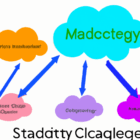In recent years, the field of regenerative medicine has emerged as a groundbreaking area of medical science, promising to revolutionize the way we treat diseases and injuries. With exciting advancements in stem cell therapy, tissue engineering, and bioprinting, healthcare technologies are poised to offer new solutions to longstanding medical challenges.
The Promise of Stem Cell Therapy
Stem cell therapy has gained significant attention due to its potential to treat a variety of conditions, including chronic diseases, traumatic injuries, and even degenerative disorders. By harnessing the regenerative properties of stem cells, researchers are developing therapies that could restore damaged tissues and organs, enabling healing at a cellular level.
Advancements in Tissue Engineering
Tissue engineering combines principles from biology and engineering to create artificial organs and tissues that can replace damaged ones. These advancements not only aim to improve graft success rates but also focus on minimizing the risk of rejection by the immune system. As research continues to progress, we can expect to see more reliable and effective solutions for patients.
Bioprinting: The Future of Organ Transplants
Bioprinting technology is at the forefront of regenerative medicine, allowing scientists to print human tissues layer by layer using bio-inks made from living cells. This groundbreaking approach opens up the possibility of creating fully functional organs for transplant, addressing the critical shortage of donor organs and improving patient outcomes in the future.
Conclusion
As regenerative medicine technologies continue to evolve, their impact on healthcare will be profound, offering new hope to patients and transforming the landscape of medical treatments. With ongoing research and development, the potential of these technologies is limitless, paving the way for a healthier future.
Stay tuned to our blog for the latest updates on regenerative medicine and its implications for healthcare.




